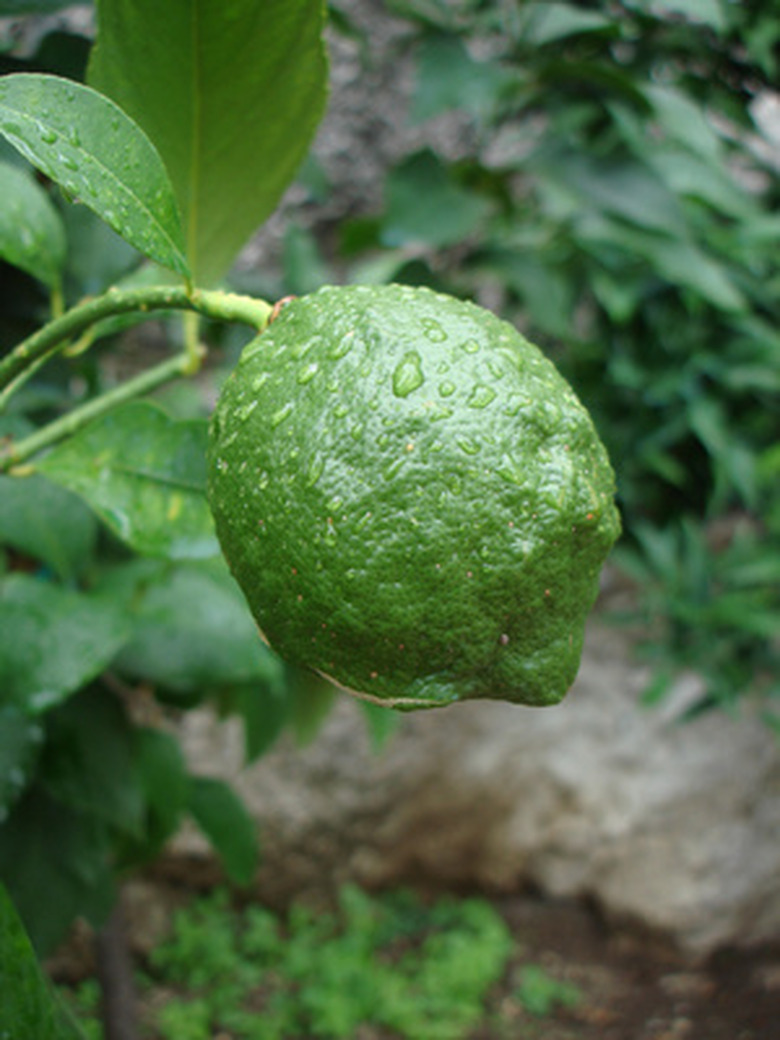Lime Trees With Thorns
Lime trees thrive in moist tropical regions. Most citrus trees have thorns and lime trees are no exception. Limes are egg-shaped and most varieties have a dimple at one end. The fruits are nearly seedless. Limes are green until they are fully mature, when they turn yellow. Limes are used in juices, commercial processed food products and to produce lime essential oils. Florida and California both grow limes commercially.
Lime trees thrive in moist tropical regions. Most citrus trees have thorns and lime trees are no exception. Limes are egg-shaped and most varieties have a dimple at one end. The fruits are nearly seedless. Limes are green until they are fully mature, when they turn yellow. Limes are used in juices, commercial processed food products and to produce lime essential oils. Florida and California both grow limes commercially.
- Lime trees thrive in moist tropical regions.
- Limes are egg-shaped and most varieties have a dimple at one end.
Key Lime
Key lime trees may or may not have thorns, depending on the branch. The same tree will have no thorns on part of it and 1/2-inch thorns on other branches. The trees are taller than the Mexican lime, reaching up to 20 feet. The fruits are smaller, about half the size of Mexican lime, and sweeter.
Tahiti Lime
The Tahiti lime, also known as the Persian lime grows to 15 to 20 feet with nearly thornless branches. However nearly thornless still means the tree has thorns. The tree blooms early in the year, usually January, although blossoms can appear at any time. The fruit ripens to a pale yellow, has few seeds and is aromatic. It has less of a strong lime flavor than the Mexican lime.
- Key lime trees may or may not have thorns, depending on the branch.
- The trees are taller than the Mexican lime, reaching up to 20 feet.
Mexican Lime
The Mexican lime is considered one of two sour limes. It has a pungent unmistakable lime flavor and aroma. Even the leaves smell like lime when rubbed. The tree grows from 8 to 15 feet tall and looks more like a small shrub. It has numerous sharp spines, 3/8 inch long. The Mexican lime is grown commercially in India, Egypt, Mexico and tropical parts of the United States. Mexican limes don't tolerate the cold as well as lemons.
- The Mexican lime is considered one of two sour limes.
Sweet Lime
Sweet lime is susceptible to viruses so is not grown in Florida for either rootstock or fruit. It doesn't do well in the warm desert regions of Southern California. It was introduced to the United States in 1904 from Saharanpur, India. It is grown in cooler, wetter tropical regions of the United States. The fruit is nearly seedless. In Central America and the West Indies the sweet lime is eaten fresh much like an orange.
References
- Texas A&M University: Home Fruit Production–Limes
- Purdue University: Tahiti Lime
- Purdue University: Mexican Lime
- "The Desert Gardener's Calendar"; George Brookbank; 1999
